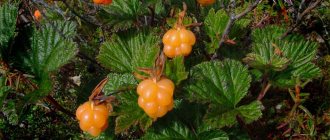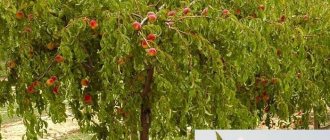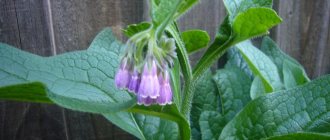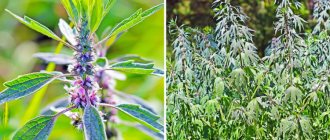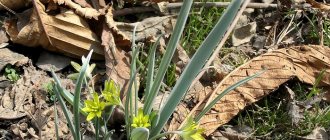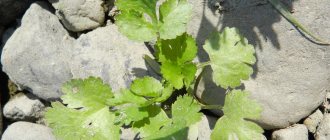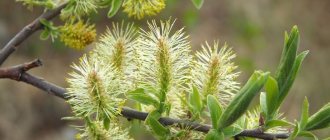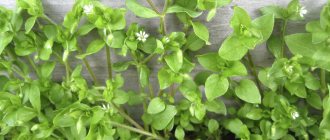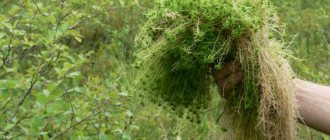What it looks like and where it grows
Creeping wheatgrass (Elytrigia repens) is a perennial herbaceous plant of the Poaceae family. It has a long horizontal rhizome with numerous cord-like shoots, lying at a depth of only 15 cm. The stem of the plant is straight, without branching, the leaves are bare, flat and linear in shape. In June and July, creeping wheatgrass bears flowers collected in small spikelets. The latter, in turn, form larger ears up to 30 cm long.
Creeping wheatgrass rises up to 1.5 m above the ground
The homeland of creeping wheatgrass is considered to be Asia, North Africa and Europe. However, currently the plant is widespread throughout the world and is found everywhere in Russia. Prefers flat areas and mountains, water meadows and arable lands, saline wet soils.
Attention! In agriculture, creeping wheatgrass is considered a malicious weed that interferes with the development of cultivated plants.
Preventing the appearance of wheatgrass on the site
It will not be possible to get rid of aggressors in a short time, so it is better to take measures to prevent their appearance. A deep digging of the soil after harvesting and careful removal of rhizomes is sufficient. In the spring, you can use a cultivator or trim the young growth with a lawn mower. You can also get rid of it by completely ignoring it by laying freshly cut grass on top of the plant. To prevent the weed from moving into the area from the neighbors, you need to dig up the soil around the perimeter and place a side of slate that will go 20-30 cm into the ground.
Chemical composition
Photos, medicinal properties and contraindications of creeping wheatgrass are of interest due to the rich chemical composition of the herb. The underground and above-ground parts of the plant contain:
- vitamins C and E;
- starch;
- proteins and amino acids;
- carotene;
- organic acids;
- carbohydrate tricine;
- fructose;
- silicic acid;
- cellulose;
- fatty and essential oils;
- alanine;
- tanning components.
Traditional medicine mainly uses the roots of creeping wheatgrass. They contain the maximum amount of valuable substances.
Why is it useful?
The aggressive vitality of the weed, its endurance is due to the fact that its tissues contain components that increase its viability. Thanks to a plant carbohydrate that acts as a fungicide and antibiotic, wheatgrass agropyrene can withstand very severe frosts that occur in temperate climates. After treating heat-loving spring wheat with an antibiotic isolated from wheatgrass, grain crops were able to withstand winter cold. Wheat-wheatgrass hybrids are distinguished by the fact that they tolerate drought and soaking, sudden temperature changes and can be perennials.
The nutritional value
100 g of wheatgrass roots contain 20 kcal, 11 g of protein compounds, 1.5 g of fatty acids, 25 g of carbohydrates, 33% fiber. Due to the presence of sugars and starchy substances in the herb, in ancient times and in our time, during lean years, dried ground wheatgrass roots were used as an additional ingredient for baking bread. In the modern world, fresh roots and young juicy leaves are used for salads, added to side dishes, they are added to meat, fish and vegetable dishes, and soups are cooked. Powder from the roots is added to jelly and beer recipes. The leaves are harvested in the spring, and the roots in early spring or late autumn.
Fresh root salad can be prepared according to the following recipe:
- Clean 120 g of roots from soil and foreign impurities, wash thoroughly, scald with boiling water, chop with a knife or using a meat grinder;
- add to them 20 g of finely chopped green onions, 30 g of grated fresh carrots, 5 g of sorrel leaves, 2-3 sprigs of dill and parsley;
- All salad components are mixed, salted to taste and seasoned with fresh, cold-pressed vegetable oil.
Wheatgrass is often mixed with other garden weed medicinal herbs to obtain vitamin-rich medicinal salads: the roots are boiled (100g), and the leaves of nettle, nettle, and plantain scalded with boiling water are crushed (30g each). The mixture is seasoned with mayonnaise. You can add green onions and parsley in minimal quantities to the salad.
Chemical composition
The biologically active substances that make up wheatgrass are represented by flavonoids, glycosides, saponins, polysaccharides, tannins, mucus, and coumarins. The roots contain salts of potassium, magnesium, iron, manganese, malic, silicic, lactic acids, ascorbic acid, beta-carotene, gluten, pectin, inulin, and the starch-like substance triticin.
Medicinal properties
Wheatgrass is used in folk medicine in the form of decoctions and infusions with diuretic, expectorant, diaphoretic, laxative, blood purifying, and enveloping properties. The herb is used in tonic and analgesic formulations. With its help, dermatitis is cured. Freshly prepared juice from the roots is a powerful anti-inflammatory agent. Homeopaths use the weed to treat kidney disease and urolithiasis.
Contraindications
Wheatgrass is not used if there is a lack of enzymes in the body that break down gluten, with diseases that are in the acute stage, with pancreatitis, stomach ulcers, diarrhea, with individual intolerance and the presence of allergic reactions to its composition. Children under 3 years of age can receive medicinal preparations from wheatgrass only after the permission of a pediatrician, and the herb is recommended to be introduced into baby food after the child reaches the age of 7 years.
Pregnant and lactating women use products containing wheatgrass only if the positive results of use outweigh the possible negative consequences.
Medicinal properties of wheatgrass
When used correctly, creeping wheatgrass can bring considerable benefits to the body. In particular, a medicinal plant:
- accelerates the healing of wounds and cuts;
- relieves inflammation in the urinary tract;
- promotes rapid recovery from ARVI and influenza;
- regulates metabolic processes in the body;
- has expectorant properties and helps with bronchitis;
- has a diaphoretic and diuretic effect;
- improves the condition of chronic fatigue and sleep disorders;
- stimulates appetite and promotes high-quality absorption of nutrients;
- increases blood clotting and saturates it with oxygen;
- cleanses blood vessels and strengthens the cardiac system;
- helps remove parasites from the intestines.
Women can use products based on creeping wheatgrass to increase libido and normalize the menstrual cycle. In men, the plant improves the composition of seminal fluid and stimulates potency, and also relieves inflammation in prostatitis.
It is recommended to take decoctions and infusions of creeping wheatgrass in case of weakened immunity and vitamin deficiency
Medicinal properties of wheatgrass root
The underground part of creeping wheatgrass contains the most valuable vitamins and tanning components. Decoctions and infusions based on the root help:
- for diseases of the gallbladder and liver;
- for sand and small kidney stones;
- with a tendency to edema;
- for eczema, psoriasis and boils;
- for chronic cough;
- with frequent migraines and arrhythmias;
- with elevated blood sugar levels;
- with hypotension.
The use of medicines based on wheatgrass root is allowed as a prevention of atherosclerosis. Raw materials help restore intestinal microflora after long-term treatment with antibiotics.
Benefits and harms of the plant
The benefits of creeping wheatgrass for the human body lie in a whole range of therapeutic effects:
- Anti-inflammatory;
- Antimicrobial;
- Urinary and choleretic;
- Enveloping and regenerating;
- Detoxifying;
- Expectorant;
- Laxative;
- Antiallergic;
- Vasoprotective and antihypertensive;
- Hypolipidemic and hypoglycemic.
Scientific medicine uses wheatgrass rhizomes as an enveloping, expectorant, diaphoretic, laxative, diuretic and blood purifier. Preparations based on the plant quickly cure furunculosis, juvenile acne and other skin diseases, and are used in the complex therapy of eczema and neurodermatitis, urticaria and collagenosis (Figure 4).
Figure 4. The plant does more harm than good
In addition to the listed therapeutic effects, wheatgrass root contains a considerable amount of sugars, as well as protein and triticin - a substance that, when an aqueous solution with hydrochloric acid is heated, turns into fructose. That is why the roots of this weed were used for baking bread and various bakery products that have high nutritional value.
Note: Dried rhizomes can be used to make cereals for porridges, seasonings, casseroles and fillings; fresh rhizomes can be used to make soup, a salad or side dish, and roasted rhizomes can even be used to make a coffee drink.
As you can see, the annoying garden weed, which is constantly being fought against, can be very useful in the treatment of many diseases and serve as a good product for lovers of wholesome and healthy food.
Methods of preparation and use
In folk medicine, creeping wheatgrass is used to prepare water remedies and strong alcohol preparations. In both cases, plant materials are beneficial when consumed in small quantities.
Juice
Fresh wheatgrass juice is good for bleeding, inflammatory skin diseases and insect bites. The healing liquid is obtained from the leaves and stems of the plant according to the following algorithm:
- Creeping wheatgrass is washed to remove dust and impurities and ground in a blender.
- Dilute the vegetable pulp with clean water in equal volumes.
- Pass the resulting mass through folded gauze.
- The green liquid is placed on the stove for three minutes and then cooled under the lid.
You need to drink 1/3 cup of creeping wheatgrass juice on an empty stomach, and apply it externally to the lesions using a cotton pad.
Wheatgrass juice is prepared in small quantities, as it retains its valuable properties for no more than two days.
Infusion
For diseases of the liver and gall bladder, a decoction of the plant is prepared for medicinal purposes. The recipe looks like this:
- Dry roots of useful herbs are crushed in the volume of two large spoons.
- Steam the raw materials with 400 ml of boiling water.
- Leave covered for six hours.
- Pass through cheesecloth when ready.
You need to take the infusion three times a day, 250 ml. In total, treatment can be continued for up to a month.
An infusion of creeping wheatgrass roots stimulates the flow of bile and removes toxins
Decoction
For problems with digestion and bleeding, a decoction of creeping wheatgrass is recommended. To prepare it you need:
- Grind the dry roots and stems of the plant.
- Pour hot water in the volume of a glass.
- Boil on the stove for about ten minutes.
- Allow the product to cool under the lid.
We recommend reading: Lesser periwinkle: benefits and harms, use of herbs in folk medicine, reviews
The finished broth is filtered and the remaining roots are squeezed out. You need to take the drug three times a day on an empty stomach, one glass at a time.
For hemorrhoids, you can use a decoction of the root of creeping wheatgrass for nightly microenemas
Baths
For skin diseases, baths with the addition of creeping wheatgrass have a good effect on the body. It is necessary to prepare a medicinal decoction according to the following recipe:
- Wheatgrass and burdock roots are placed in an enamel bucket, 100 g each.
- Pour in 5 liters of water and bring to a boil.
- Heat for ten minutes.
- Drain the finished product through cheesecloth into a filled container.
You need to take baths 1-2 times a week for half an hour in the evening. The water temperature should not exceed 37 °C.
Baths with wheatgrass decoction have a good calming effect
Methods for controlling wheatgrass as a weed
Removing weeds represented by wheatgrass is quite difficult. Measures aimed at controlling weeds will require a lot of time and effort. For this purpose, not only folk remedies and manual labor are widely used, but also modern chemical preparations:
- After the autumn harvest, two-stage plowing is carried out with disking to a depth of 8-12 cm and plowing. Re-treatment is required after about a couple of weeks;
- in small areas, manual sampling of weed roots is carried out using a fork or bayonet shovel;
- Mechanical methods of control also include spring harrowing and pruning shoots, chopping rhizomes using a cultivator, as well as darkening with mulching.
With the help of herbicides, it is possible to remove more than seventy percent of weeds from a personal or garden plot. Most often, the low-toxic and universal drug Roundup , the continuous herbicide Hurricane Forte , as well as the pesticides Agrokiller, Glyphos and Tornado . It is important to remember that it is not recommended to use herbicides on the same area more than three times in one year.
The use of creeping wheatgrass in folk medicine
Creeping wheatgrass can often be found in traditional medicine recipes. Plant-based medicines are used to relieve acute conditions and improve well-being in chronic ailments.
For gout
A decoction of creeping wheatgrass relieves inflammation due to gout and helps remove salts from the joints. Prepare the product as follows:
- The dry root of the plant is crushed and two large spoons are measured.
- Steam the raw material with 500 ml of boiling water.
- Leave the product under the lid for eight hours.
- Filtered.
You need to take the decoction three times a day before meals, warm, half a glass.
When coughing
An infusion of creeping wheatgrass promotes expectoration and improves the condition of colds, coughs and bronchitis. Traditional medicine advises using the following remedy:
- 30 g of dry grass roots are poured into 250 ml of warm liquid.
- Cover the container with a lid and leave for 12 hours.
- After the expiration date, filter the product, squeezing out the sediment.
The infusion should be drunk a glass three times a day. It is important to prepare the drug using warm water in order to preserve the maximum of valuable substances in its composition.
For diabetes
Creeping wheatgrass reduces blood sugar levels and normalizes metabolic processes in diabetes. The following remedy is used for treatment:
- 50 g of crushed root is poured into 1.2 liters of water.
- After boiling, boil over low heat until about a quarter of the original volume of liquid remains.
- Cool and filter the medicine.
Take 15 ml of wheatgrass root decoction up to five times a day. Take the drug on an empty stomach.
For oncology
Creeping wheatgrass stimulates the immune system and has a beneficial effect in the complex treatment of cancer. For general strengthening of the body, use the following decoction:
- 30 g of dried crushed root is poured into 500 ml of boiling water.
- Keep the product on low heat for 15 minutes.
- Remove the broth from the stove and leave covered for three hours.
- Strain.
Drink 1/3 cup four times a day on an empty stomach. In total, the medication should be used for up to a month.
Warning! For oncology, creeping wheatgrass can only be taken with the permission of a doctor and in combination with official medications.
For gastritis
Useful creeping wheatgrass stimulates digestion and helps get rid of pain and heaviness in the stomach. For gastritis, the following infusion is recommended for use:
- Five small spoons of dry root are crushed and poured with 250 ml of warm water.
- Leave the product covered for 12 hours.
- Strain the preparation and separate the sediment from the liquid.
- Pour a glass of fresh boiling water over the wet roots and leave at room temperature for an hour.
After the expiration date, the product must be filtered and mixed with the first water remaining after infusion. Drink half a glass up to four times a day on an empty stomach.
For a cold
For acute respiratory viral infections and influenza, an alcohol tincture made from the leaves and stems of wheatgrass has a good effect. It is done according to the following algorithm:
- Fresh greens of the plant are crushed in a blender and squeezed through folded gauze.
- Two large spoons of the resulting juice are mixed with a glass of high-quality vodka.
- Shake the vessel and put it in a dark place for two weeks.
The finished tincture has a long shelf life. It can be used in winter for colds, 5 ml three times a day - the product will help relieve fever and eliminate weakness.
A medicinal tincture of creeping wheatgrass for colds can be added to tea
For hemorrhoids
Treatment with creeping wheatgrass is carried out for inflammatory processes in the large intestine and hemorrhoids. The following decoction has a good effect:
- 30 g of dry raw materials are crushed and poured with boiling water in the volume of a glass.
- Place the product on the stove over low heat for ten minutes.
- Cool the broth covered and strain to remove the sediment.
We recommend reading: Pikulnik: medicinal properties, benefits of herbs, reviews
The drug is taken orally, 1/3 cup on an empty stomach three times a day. In addition, the product can be used for healing microenemas in a volume of 50-60 ml.
For infertility
Creeping wheatgrass normalizes hormonal levels in men and women and improves the functioning of the reproductive system. The following drug can be used in the complex treatment of infertility:
- 15 g of dry crushed root is poured with fresh boiling water in a volume of 250 ml.
- Leave to infuse for half an hour under the lid.
- Filter from sediment.
You need to take a large spoonful of the infusion three times a day. Creeping wheatgrass improves the quality of seminal fluid in men and normalizes the menstrual cycle in women.
For cholecystitis
The medicinal properties of creeping wheatgrass help relieve inflammation in diseases of the gallbladder and liver. For cholecystitis, traditional medicine advises preparing the following drink:
- 30 g of dry roots are crushed and brewed with 300 ml of fresh boiling water.
- Keep the product under a tight lid or in a thermos for six hours.
- Strain the cooled infusion.
The product should be drunk a glass three times a day for a month. Creeping wheatgrass will improve the flow of bile and normalize digestion.
Decoctions and infusions of wheatgrass should not be used for large stones in the gall bladder.
For inflammation of the ovaries
For gynecological problems in women, a decoction of creeping wheatgrass helps normalize their well-being. It is done using this algorithm:
- A large spoonful of dried rhizomes is poured into a glass of milk.
- Bring the solution to a boil on the stove and keep for ten minutes over low heat.
- Cool the healing agent to a warm state and filter to remove sediment.
The decoction is taken twice a day, 250 ml, until you feel better.
Diseases of the stomach and intestines
It will help eliminate pain, colic, bloating, and normalize digestion and wheatgrass stool. The medicinal properties of the herb have been known for their anti-inflammatory effects for centuries. Convince yourself of this by preparing a simple decoction of five dessert spoons of crushed raw materials and a glass of water. Leave the solution for ten days, then strain, and pour 200 ml of boiling water over the remaining roots and leave for 45 minutes. Mix two decoctions, consume 100 ml half an hour before meals four times a day.
Contraindications to the use of creeping wheatgrass
The benefits of creeping wheatgrass are not always clear. It is not recommended to use products based on medicinal plants:
- with individual intolerance;
- with severe hypotension;
- with a tendency to diarrhea;
- during exacerbation of stomach ulcers and pancreatitis;
- during pregnancy and feeding.
When treating with creeping wheatgrass, you need to remember safe dosages. In excess quantities, the plant can harm the kidneys and liver.
Growing wheatgrass
Landing
Recently, more and more often you can find areas sown with wheatgrass, which is grown as a medicinal plant or for livestock feed. Wheatgrass grows best in moist, loose soils. It is propagated both by seed and vegetatively.
Wheatgrass is sown in early May. Before sowing, the seeds are soaked overnight in cold water, then they are sown in the soil so that they do not touch each other, sprinkled with a thin layer of earth on top and a film is pulled over the crops. If you germinate wheatgrass seeds before sowing, you will not need film.
- Date palm: cultivation and difficulties
But it is much easier to grow wheatgrass vegetatively. To do this, you need to separate the adventitious wheatgrass root with a bud from the rhizome and plant it at a shallow depth in prepared, that is, simply dug up soil. The wheatgrass plant itself will begin to multiply intensively, capturing ever larger areas.
Rules of care
Those who grow wheatgrass in their gardens claim that the profitability of this crop is very high. And this despite the fact that caring for it requires almost no effort. Water wheatgrass only in severe drought. It is better to apply nitrogen fertilizers to the soil in mid-autumn. Spring fertilizing of creeping wheatgrass does not give any results, but phosphates can be applied in the summer.
How to get rid of wheatgrass
If wheatgrass appears on your site against your wishes, get ready for a long and grueling struggle. How to get rid of wheatgrass ? A whole system of agrotechnical measures has been developed against this malicious weed, which involves deep embedding of the plant in the ground: it does not sprout from great depths. You can deplete wheatgrass with suppressive crops, such as seeded grasses. But without manual weeding and treating the area with pesticides, you will not be able to defeat creeping wheatgrass.
When and how to collect creeping wheatgrass
The roots of the medicinal plant are harvested in early spring before shoots appear or in late autumn after they wither. The wheatgrass is dug up and the underground part is separated, and then it is washed from dirt and small lateral shoots are removed. To dry, the root is laid out under a canopy in the fresh air or in a warm, ventilated room. It is also allowed to place the raw materials in an oven heated to a maximum of 50 °C. When the grass stems become stiff and no longer bend when pressed, they will need to be poured into a paper bag or glass jar and stored in a dark cabinet.
It is recommended to collect the leaves and stems of the plant in late spring or early summer, while the greens are as fresh as possible. As in the previous case, the raw materials must be dried and then stored in a place protected from light.
Medicinal raw materials of creeping wheatgrass retain valuable properties for up to two years
Wheatgrass recipes
Fresh roots are used in many dishes. These can be soups, salads, vegetable dishes, side dishes and even baked goods.
For example, for soup, you can add 0.5 cups of crushed wheatgrass roots to 2 cups of water. For salad, the roots are passed through a meat grinder. In the casserole, the roots are crushed. Several recipes from the Internet.
Borscht made from wheatgrass.
4 liters of water + a bunch of wheatgrass (rhizome and greens) + dandelion green leaves + 6-8 potatoes + 2 medium carrots + a bunch of green onions + 2 eggs + green parsley + dill + salt. Wash the green dandelion leaves well. Place them in salted water for half an hour to remove the bitterness. Wash the wheatgrass. Place in boiling water and boil for 10 minutes. Then remove the wheatgrass and throw it away.
Add chopped potatoes and salt to this broth (brownish in color). Let it boil. Add carrots. Cook until the potatoes are ready. At the end of cooking, pour in the eggs, lightly beaten with a knife, while stirring. Add chopped green onions, herbs and dandelion leaves. Let stand for 15 minutes covered. You can add sour cream.
0.5 l of meat broth + 2 pcs. potatoes + 1 carrot + 1 onion + 50 g wheatgrass rhizomes + parsley + salt. Add potatoes, carrots, and onions to the meat broth. Cook until half cooked. Then add chopped wheatgrass rhizomes and parsley. Add salt. Boil for 5 minutes. Wheatgrass rhizome soup.
Wheatgrass rhizome salad.
Wash fresh rhizomes (120 g), mince or finely chop. Add onion (20 g), carrots (30 g), sorrel (5 g), dill (3-5 g). Season with vegetable oil or mayonnaise (10 g). Add salt.
Salad from wheatgrass rhizomes with other plants.
Mix boiled rhizomes (100 g) with blanched crushed leaves of nettle (50 g), dandelion, honey, plantain (30 g each). Add salt. Mix. Season with mayonnaise (sour cream, tomato sauce, vegetable oil) (100 g). Sprinkle with dill, parsley and green onions (15 g).
Porridge with wheatgrass. Mix wheatgrass (1:2, 1:1) with other cereals: pearl barley, buckwheat, millet, etc. Cook over low heat until tender. Salt at the end of cooking. Let stand in a warm place for 1-2 hours. Add milk or butter.
Potatoes baked with burdock, wheatgrass and onions
250g potatoes, 50g burdock roots and wheatgrass rhizomes, 40g onions, 50g vegetable oil, 10g crackers.
Peel the potatoes, boil, cut into slices. Peel the burdock roots, grate them on a coarse grater, rinse the wheatgrass rhizomes thoroughly and chop finely. Grease a frying pan with oil, layer potato slices, burdock, wheatgrass and fried onions, sprinkle with breadcrumbs, and bake in the oven.
Wheatgrass puree.
Wash wheatgrass rhizomes (250 g) thoroughly with cold water. Boil in salted water until softened. Drain the water. Skip and chop the rhizomes. Add: sauteed onion (50 g) + ground pepper (2 g) + salt. Season with butter or sour cream (15 g).
The healing properties of wheatgrass are unique and give health to humans. Use this plant in your diet and prepare the raw materials yourself in advance, rather than using ineffective pharmacy options.
Good health to you!
| Author of the article, Lyubomir Borisov My page in VK >>> Instagram >>> |
Learn to control your destiny, make your dreams come true and achieve your goals in 30 days.
Brief description and biological features, photo
Creeping wheatgrass is a monocotyledonous grass with a long creeping rhizome and shoots. The foliage is flat, wide. The flowers are collected in a thick and large spike. The grass blooms in May and June. The fruit is a grain.
You can see what the whole plant and its individual parts look like in the photo below.
What the plant looks like during and after flowering, as well as how the leaves are attached, their location on the stem is shown in this photo:
The photo below shows the stems and white rhizomes of a freshly dug plant, a dense bush that stems and leaves form in meadows in nature, as well as a diagram of the structure of wheatgrass: spike and rhizome.
The following image is a view of a wheatgrass spikelet at various stages of ripening and its fruit - a grain.
The photo shows the depth of the rhizome and the width of its branching.
The plant is popularly called root-grass, grass-root, worm-grass, dog-grass, plover. Below is a partial list of popular names for the plant.
Distributed everywhere, prefers loose, moist, well-fertilized soils. Grows in floodplains, fallow fields, and sparse birch forests. It grows up to 120 cm in height, the rhizome spreads up to several meters in length.
The biological feature of wheatgrass is that its high rate of reproduction and growth requires a lot of moisture. It has good competition for living space. Causes inhibition of growth and density of cultivated plants.
Wheatgrass root releases toxic substances into the soil, which cause the death of beneficial plants. The weed effectively reproduces by seeds and parts of the rhizome, which lie superficially in the soil.
Capable of rapid germination. The shallow location of the roots and the absence of a dormant period for buds and seeds promotes both early spring shoots and shoots throughout the growing season.
How to get rid of grass mechanically
Senna grass: description, where it grows, properties and uses
If wheatgrass has appeared, and it is undesirable in the garden area, then a plan for combating it needs to be thought out as early as possible. The most accessible and proven method is mechanical. It is used in several stages.
- The site is plowed in the autumn. It needs to be done twice: the first time to a depth of 12 cm, and the second time (after 7 days) to a depth of 20 cm.
- If the area is small, you can dig out the roots by hand. You cannot use a shovel for digging; it can cut the roots, thereby spreading the wheatgrass even more. A pitchfork would be an excellent attribute for this. The wheatgrass bush needs to be carefully dug up, the soil shaken off and removed from the site.
- Regular weeding.
- If the entire area is covered with wheatgrass, it is best to use a cultivator. They need to chop up the grass and rhizomes so that new shoots with a small root system can sprout. They are easily removed.
Homemade hand cultivator
Such methods are effective, but if quick cleaning of the garden area is required, then it is better to use various chemicals in a comprehensive manner.

